Workflow automation software helps automate business processes and saves significant time when managing and completing repetitive tasks. Considering that such tools also let you connect with cloud apps and help with efficient software-building, it’s unsurprising that the industry’s value is expected to surpass $30 billion by 2029[1].
The Geekflare team has researched, tested, and listed the top process automation software for businesses in multiple industries. We’ve analyzed each tool for unique features (e.g. real-time collaboration and on-premise deployment), pricing, prebuilt integrations, and more.
- monday.com – Best for Visual Workflows and Team Collaboration
- Bitrix24 – Best for All-in-One Business Management and Workflow Automation
- Zapier – Best for Integrations and No-Code Automation
- ClickUp – Best for Built-in Project Management and Customization
- Jira – Best for Task Management, Software Teams, and Customizable Workflows
- Integrify – Best for Process Collaboration and Self-Service Portals
- Jotform – Best for Data Collection and Form-Triggered Workflows
- Wrike – Best for Customizable Tasks, Analytics, and Enterprise Needs
- Pneumatic Workflow – Best for Customizable Workflows and No-Code Visual Builder
- Kissflow Workflow – Best for Process Reporting and Approval Workflows
- Next Matter – Best for Operations Management and Cross-Team Workflows
- Qntrl – Best for Orchestrating Workflows Within Existing Tools
- Box Relay – Best for Document-Centric Workflows and Automation
- IFTTT – Best for Social Media
- Power Apps – Best to Modernize Legacy Apps
- n8n – Best for Technical Teams
- Show less
You can trust Geekflare
At Geekflare, trust and transparency are paramount. Our team of experts, with over 185 years of combined experience in business and technology, tests and reviews software, ensuring our ratings and awards are unbiased and reliable. Learn how we test.

monday.com
Best for Visual Workflows and Team Collaboration
- Integration CapabilitiesSalesforce, Slack, Trello, API
- Automation ComplexityMedium
- Reporting and AnalyticsProject Timelines, Workload Charts
About monday.com
monday.com is headquartered in Tel Aviv, Israel, while also having offices in the US. The company has more than 220,000 customers. Automation is available with Standard plans and above, with prices ranging from $12-19 per user, per month. Specializing in project management and featuring several customizable templates, monday.com is the best workflow automation tool for visual workflows and team collaboration.
monday.com offers real-time collaboration with the option to automatically add users to tasks and notify users via customizable “if > then” parameters. The software integrates with 200+ tools, such as Gmail, Slack, and Google Calendar. Users can set up automation within these apps (e.g. notifying Slack channels when a project status has been completed).
The monday.com app supports 13 languages, including Japanese, Traditional Chinese, Swedish, German, and Korean. It also has several project management features, such as customizable Gantt chart views and the option to create task cards before assigning users.
monday.com lets teams provide feedback with commenting features and attachments. The app also has native app add-ons, such as TeamBoard and Google Sheets Automation.
monday.com Pros/Cons
monday.com pros and cons
Several add-ons are available (e.g. Google Sheets Automation)
Create preset automation “recipes” to save time
200+ third-party app integrations with tools like Email, Slack, and Google Calendar are available
Users are limited to 250 automations per month with a Standard plan
No automation features are available with Free and Basic plans
monday.com Pricing
| Subscription Plan | Monthly Price/User | Offerings |
|---|---|---|
| Standard | £11 | Timeline and Gantt chart views, 250 automations per month, 250 integration actions per month |
| Pro | £17 | 25,000 automations per month, 25,000 integration actions per month, private boards |
| Enterprise | Custom | Tailored onboarding assistance, 250,000 automations and integrations per month |
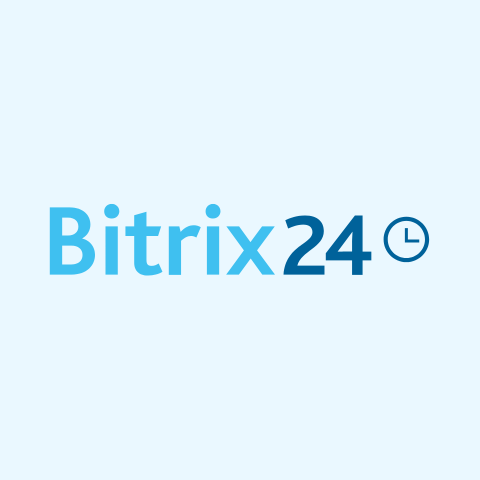
Bitrix24
Best for All-in-One Business Management and Workflow Automation
- Integration CapabilitiesZapier, Microsoft 365, Dropbox, Mailchimp
- Automation ComplexityMedium
- Reporting and AnalyticsProject Analytics, Workflow Performance
About Bitrix24
Bitrix24 has more than 15,000,000 customers around the world. At the heart of Bitrix24 is CRM, complete with project management, online collaboration, and communication tools with workflow management and a powerful AI assistant.
By default, Bitrix24 provides five workflows: Leave Approval, Business Trip, General Requests, Purchase Request, and Expense Report. It is possible to create new workflows to automate daily tasks, such as purchasing products or negotiating contracts.
Bitrix24 automated workflows can be used to take a document through approval stages, assign tasks, send emails, or notify of an approaching deadline. This way, you can approve a business trip, request a leave, and more.
Due to the mobile app, it is possible to start and control workflows on the go. Users can check how long it takes to approve employees’ requests and optimize the average execution time of the workflows. All these tools are available in Professional and Enterprise plans.
The Bitrix24 software is available in 18 languages, including German, Spanish, Chinese (traditional and simplified), Italian, French, and Vietnamese. It also has several project management features with Gantt chart and a website builder with AI.
All process-related activity is saved and stored in a single dashboard, so there’s no need to open every stage of a process to see its details and history. Bitrix24 offers various workflow templates, which are pre-configured sequences of actions that allow you to launch processes quickly.
Bitrix24 Pros/Cons
Different workflow templates
Notifications for every task
Design and create your own workflows
Multiple storage options (Cloud-based or On-premise)
35 tools for businesses
Powerful tools covering multiple aspects of business management
Software has too many features
Steep learning curve overwhelming for beginners
Bitrix24 Pricing
| Plans | Monthly Price/Organization | Offerings |
|---|---|---|
| Professional | £149 | Business process designer, Feed workflows, 20 automated solutions seats |
| Enterprise | £299 | Business process designer, Feed workflows, 150 automated solutions seats |

Zapier
Best for Integrations and No-Code Automation
- Integration CapabilitiesHubSpot, Trello, Slack, API
- Automation ComplexityLow
- Reporting and AnalyticsTask Logs, Engagement Reports
About Zapier
Zapier was founded in 2011 and is headquartered in the US. Over 2.2 million people use the tool, which integrates with more than 6,000 apps. This, along with the ability to create unlimited “Zaps” (even with a free plan), make it the best for no-code platform for automation and integrations.
Some of Zapier’s third-party integrations include Slack, Gmail, Outlook, and Tiktok. Several native app integrations, such as Email by Zapier and Formatter by Zapier, also exist in the marketplace. Teams can make custom Zaps to automate their workflows in several ways, such as automatically uploading files and making draft emails. None of these require coding experience.
As of May 2024, Zapier is only available in English. However, you can use Zaps — like Translation by Zapier — to translate your automations into 100+ languages. Zapier also has a Zap builder, which uses AI to perform several actions. For example, teams can write documentation using this tool.
Zapier lacks native project management features, but teams can easily use the tool with Asana, Notion, monday.com, and numerous other productivity solutions. It also has three add-ons for $20/mo extra: Tables Premium, Chatbots Premium, and Interfaces Premium.
Zapier Pros/Cons
Unlimited Zaps for free users each month
Integration with 6,000+ apps
Use AI to build Zaps and automate more quickly
Limited multilingual support for the app
Email support is only available with a paid plan
Zapier Pricing
| Plan | Monthly Price | Offerings |
|---|---|---|
| Free | £0 | Unlimited Zaps, two-step automation, access to Zapier’s app |
| Professional | £15.70 | Unlimited app integrations, email customer support |
| Team | £54.21 | Unlimited users, SSO add-ons available for a fee, shared integrations |
| Enterprise | Custom | Tailored technical support, low-code features |
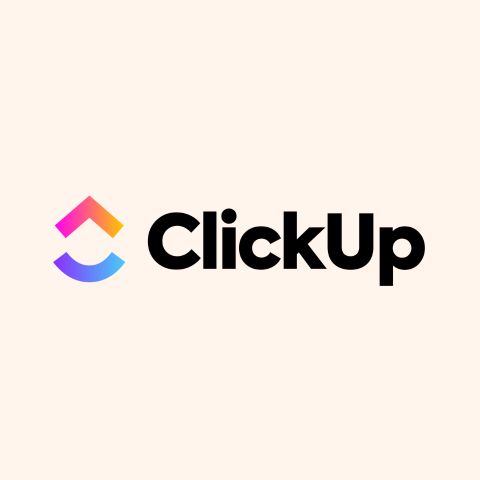
ClickUp
Best for Built-in Project Management and Customization
- Integration CapabilitiesSalesforce, HubSpot, Slack, API
- Automation ComplexityMedium
- Reporting and AnalyticsTask Progress, Time Tracking
About ClickUp
ClickUp, founded in 2017 by Zeb Evans and Alex Yurkowski, is based in the US. More than 10 million people use the software, which has comprehensive project management tools like multiple viewing options. Users can also make custom task types and choose from different status templates, making it the best workflow automation software for built-in project management and customization.
ClickUp has mobile accessibility via iOS and Android apps, and users can use AI to get ideas and ask for an overview of urgent tasks. Teams using the app’s automation features can automatically assign users when certain actions are triggered, and it’s also possible to exclude metrics so that workflows are more accurate.
Teams can build custom integrations and apps with ClickUp’s API, and ClickUp itself also integrates with over 1,000 apps. Examples include GitHub, Google Drive, and a one-way sync with Apple Calendar and Google Calendar. Users can also integrate SSO with Google, Microsoft, and Okta.
ClickUp lets users choose from seven language variations, including Brazilian Portuguese and Latin American Spanish. German, Italian, and French are also available. Project management features include goal-setting, commenting features, and workload views.
In addition to what’s already included in monthly plans, ClickUp lets users add extra automations if needed. These cost $19.99/mo (1,000 actions), $99.99/mo (10,000 actions), and $299.99/mo (100,000 actions) respectively.
ClickUp Pros/Cons
Create custom apps and integrations with ClickUp API
Comprehensive project management features, including task overviews, Wikis, and goals
Unlimited members with a free plan
Limited multilingual diversity (e.g. no Asian languages are available)
App loading times are sometimes slow
ClickUp Pricing
| Plan | Monthly Price/user | Offerings |
|---|---|---|
| Free | $0 | 50 active automations, 100 actions per month |
| Unlimited | $7 | 500 active automations, 1,000 actions per month, unlimited storage and integrations, compatible with ClickUp AI |
| Business | $12 | Google SSO, unlimited active automations, 10,000 actions per month (25,000 with Business Plus), customizable exports |
| Enterprise | Custom | Unlimited active automations, 250,000 actions per month, US/EU/APAC data residency, access to Enterprise API |
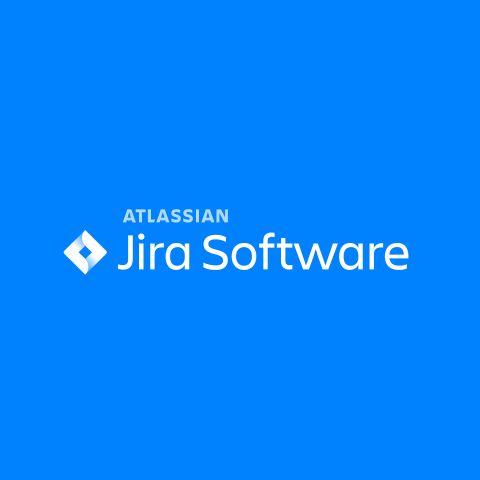
Jira
Best for Task Management, Software Teams, and Customizable Workflows
- Integration CapabilitiesSlack, GitHub, Google Cloud
- Automation ComplexityHigh
- Reporting and AnalyticsSprint Reports, Flow Metrics
About Jira
Jira was acquired by Atlassian in 2019, but the software has been around since 2002. The company is headquartered in Australia. With a drag-and-drop interface, Scrum boards, and capacity planning, Jira is the best workflow automation solution for task management, software teams, and customizable workflows.
Teams can set up auto-assignees to ensure that projects get allocated appropriately, and Jira’s drag-and-drop automations allow users to set up powerful workflows without consuming too much time. The app’s automation features also let teams automatically mark completed tasks as finished and automatically close dormant requests. The automation will leave a comment in case the customer wants to reopen the case.
Jira has a daily Slack summary feature to quickly resolve issues. Project management features include timeline views, real-time syncing, and the ability to add documents. Progress reports are also available for comprehensive projects, such as app development.
Users can integrate Jira with apps like Figma, Scriptrunner, and other Atlassian-owned software like Trello and Confluence. Jira supports over 15 languages, including English, Danish, Japanese, Hungarian, and Turkish. Jira Service Management is currently working on introducing Vietnamese as well.
Jira Pros/Cons
15+ languages supported, including less-spoken ones like Hungarian and Finnish
Comprehensive project management features for software teams, such as Sprint progress reports
Automatic task assignment to ensure accuracy for new workflows and projects
Unlimited projects, max. 10 users and 2 GB storage with a free plan
Comprehensive integrations within the Atlassian ecosystem, such as Confluence
24/7 support only available with an Enterprise plan
User roles and permission customizations are only available with a paid plan
Jira Software Pricing
| Subscription Plan | Monthly Price/user | Offerings |
|---|---|---|
| Free | $0 | 100 monthly automations, Atlassian community access, max. 10 users |
| Standard | $7.16 | 1,700 site automations per month, unlimited users, collaborate with external guests |
| Premium | $12.48 | 1,000 automations per user, per month, unlimited storage, 99.9% uptime |
| Enterprise | Custom | Unlimited automations, round-the-clock support, 99.95% uptime |

Integrify
Best for Process Collaboration and Self-Service Portals
- Integration CapabilitiesSalesforce, Slack, Oracle, API
- Automation ComplexityHigh
- Reporting and AnalyticsCompliance Reports, Workflow Performance
About Integrify
Integrify was founded in 2001 by Rich Trusky and Dave Willsey, and is headquartered in the US. The company is owned by PSPDFKit and features process-builders, service portals, and form designers. These all contribute to Integrify being the best workflow automation solution for process collaboration and self-service portals.
Teams can test-run their processes to ensure that everything works as it should, and it’s also possible to drag and drop elements from start to finish. The same feature is also available for forms. Note and commenting features help project management run more smoothly between teams, and teams can use Javascript and other programming languages to customize forms.
Integrify integrates with Slack, Salesforce, Sage, SAP, and a handful of other software tools. The app offers real-time insights and team progress reports.
Integrify Pricing
Integrify’s pricing is based on custom quotes.
Integrify Pros/Cons
Enhance forms, etc., with custom code
Lots of customer support options, including ticket, phone, and email
Unlimited workflows, storage, and forms
No pre-defined pricing
Limited integration options

Jotform
Best for Data Collection and Form-Triggered Workflows
- Integration CapabilitiesSalesforce, HubSpot, Slack
- Automation ComplexityLow
- Reporting and AnalyticsForm Responses, Submission Stats
About Jotform
Jotform is an online form builder based in San Francisco, California, and is used by over 25 million people. Since the software focuses on form creation, it’s the best software for form-triggered workflows. Meanwhile, integrations like JotPoll and Google Analytics make it the best workflow automation software for data collection.
Jotform integrates with Zapier, allowing users to automate workflows in project management software like Trello and Asana. Through its marketplace, it’s also possible to integrate Jotform with other apps like OneDrive and Airtable.
Users can navigate Jotform in dozens of languages, including Indonesian, Arabic, Italian, English, and Dutch. Automation is available on all plans.
Jotform Pros/Cons
All features included in the free plan, albeit with limitations
50% discount available for nonprofits and educational institutions
100 forms is the highest limit (unless you have an Enterprise plan)
Limited customizations compared to dedicated workflow management tools
Jotform Pricing
| Plan | Monthly Price | Offerings |
|---|---|---|
| Free | $0 | Jotform integrations, 100 monthly submissions, 1,000 monthly form views |
| Bronze | $34 | 25-form limit, 1,000 monthly submissions, 1 GB storage space, 250 fields per form |
| Silver | $39 | 2,500 monthly submissions, 500 fields per form, 10 GB available space |
| Gold | $99 | 10,000 monthly submissions, 100 GB storage space, 1 million monthly form views |
| Enterprise | Custom | SSO, SLAs, local data residency, unlimited use |
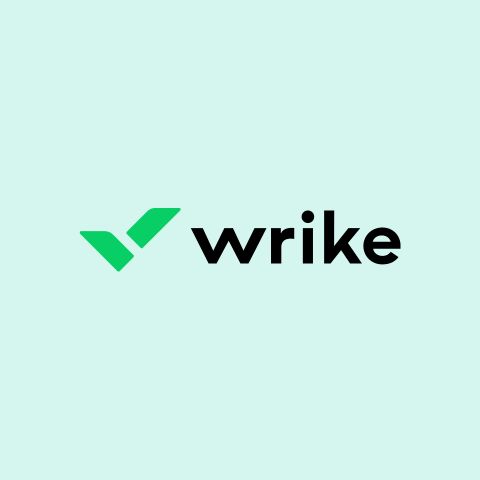
Wrike
Best for Customizable Tasks, Analytics, and Enterprise Needs
- Integration CapabilitiesSalesforce, HubSpot, Oracle, Slack, API
- Automation ComplexityMedium
- Reporting and AnalyticsMarketing Performance, Real-time Metrics
About Wrike
Wrike was founded in 2006 by Andrew Filev, and the company is headquartered in the US. More than 20,000 businesses use the software, which features analytics like budget and actual spending by OKRs. The app also features task management, custom workflows, and Kanban/Gantt chart views, making it our top choice for customizable tasks, analytics, and enterprise needs.
Teams using Wrike can add custom task automation conditions and choose who they want to mention when these actions are triggered. Account and space-level members get comprehensive permissions. The former can customize account-level workflows, and the latter can adjust all tasks and projects.
Wrike has desktop and mobile apps and supports automation/integration with WordPress, Google Sheets, Salesforce, Outlook, SurveyMonkey, and more. The API integrates workflows you’ve created in the Wrike app.
Wrike has advanced features, with roadmaps available for all of your projects. Collaborative tools include adding attachments and commenting. Teams can also see how much of their budget remains, and project portfolio management is also available. Wrike supports eight languages, including Spanish, Italian, and French.
Wrike Pros/Cons
Comprehensive reporting analytics
Extensive customizable automation features, including automatically disabling rules that no longer work
Customizable dashboards for team members
AI-powered sub-item creation for complex business processes
Limited automation allowances (50-1,500 per month)
Limits on automation rules (1,000-4,000 depending on your plan)
Wrike Pricing
| Plan | Monthly Price/user | Offerings |
|---|---|---|
| Team | $9.80 | 50 automations per user, per month, 20 free collaborators, custom workflows |
| Business | $24.80 | 200 automated actions per user, per month, unlimited dashboards, custom item types in workflows |
| Enterprise | Custom | 1,000 automated actions per user, per month, SAML-based SSO and 2FA, admin permission delegation |

Pneumatic Workflow
Best for Customizable Workflows and No-Code Visual Builder
- Integration CapabilitiesSalesforce, Slack, Teams, API
- Automation ComplexityMedium
- Reporting and AnalyticsWorkflow Highlights, Competitive Analysis
About Pneumatic Workflow
Pneumatic Workflow was founded in May 2020 by Anton Seidler and Stepan Rodinov. The app has an AI-powered workflow builder and video-based workflows, along with an editing toolbar that lets you delete and reorganize text. These features Pneumatic the best workflow automation software for no-code visual-building and workflow customization.
Teams using Pneumatic get a template builder that lets you add variables and assign people to the task. Users can integrate Zapier with the Pneumatic public API, and every pricing tier has access to all features. Pneumatic can also handle migration for you. Using Zapier, teams can also integrate apps like Salesforce and Slack.
With the Pneumatic workflow builder, users can tell the assistant exactly what they want. After doing that, the tool will work on building the necessary processes.
Pneumatic Workflow Pros/Cons
No per-user pricing
Done-it-for-you migration
Build workflows with AI prompts
Done-it-for-you workflow design
No free plan is available
Only available in English and German for now
Pneumatic Workflow Pricing
| Plan | Monthly Price | Offerings |
|---|---|---|
| Self-Serve | $99 | Unlimited users, Zapier integrations, chat support |
| Turnkey | $5,900/year (annual subscription only) | Unlimited usage, eight-week migration, done-it-for-you workflow design, unlimited customer support access |
| Enterprise | Custom | Backup and disaster recovery, SLA, further access to custom development |
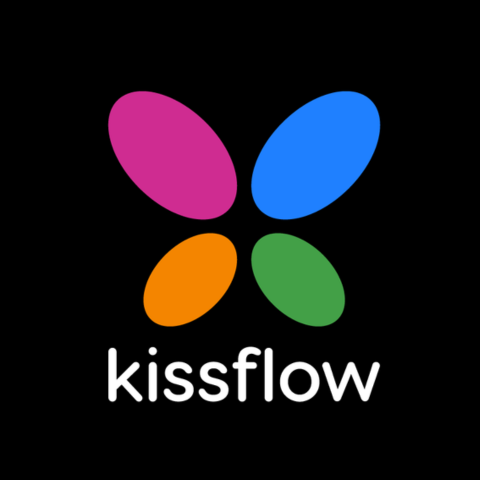
Kissflow Workflow
Best for Process Reporting and Approval Workflows
- Integration CapabilitiesAsana, HubSpot, Salesforce, API
- Automation ComplexityMedium
- Reporting and AnalyticsWorkload Metrics, Charts, Pivot Tables
About Kissflow
Kissflow was founded in 2003 and became a SaaS company in 2012. Headquartered in the US, Kissflow has over a million users; companies using the service include Pepsi and Caribbean Airlines. With pre-built dashboards, pivot table visualization, and custom-made forms, Kissflow is the best workflow management for process reporting and approval workflows.
Teams using Kissflow can access a no-code app builder and build pages without programming experience. The app shows product stock levels and offers multiple automation customizations, including visual trees, so that teams can see the whole process from start to finish.
Kissflow can integrate with APIs, and users can integrate the tool with Zoho Flow, Asana, Basecamp, and many other apps (including the Google Workspace and Microsoft Office suites). The app supports five languages: English: German, Italian, French, and Spanish.
In addition to its third-party integrations, Kissflow has several pre-built low-code apps. These include an applicant tracking system, bug tracking system, and expense management.
Kissflow Pros/Cons
Automated workflow visualization for teams
Lots of pre-built native apps ready for integration
Fluid forms with several customization metrics, such as currency and multi-line text
No external users unless you get Enterprise
Only two pricing tiers. Pricing is significantly higher than competing products.
Kissflow Workflow Pricing
| Subscription | Monthly Pricing | Offerings |
|---|---|---|
| Basic | $1,500 | Internal users, core Kissflow features |
| Enterprise | Custom | External users, private clusters |

Next Matter
Best for Operations Management and Cross-Team Workflows
- Integration CapabilitiesSalesforce, HubSpot, Slack, API
- Automation ComplexityMedium
- Reporting and AnalyticsCompliance Reports, Task Metrics
About Next Matter
Next Matter, founded in 2018, is headquartered in Berlin, Germany and used by brands like Branch, Dance, and wefox. With system integrations, conditional assignments, and seamless collaboration, Next Matter is the best workflow automation software for operations management and cross-team workflows. The app also lets users automate customer service, compliance, and operations.
Next Matter has a live dashboard that lets teams track deadlines, SLAs, and more. This dashboard is broken down into several sections, such as initial review. The app also features metric analysis like know-your-customer (KYC) workflow completion time and completed KYC instances.
Teams using Next Matter can integrate the app with 40+ apps, including Gmail, Google Calendar, Microsoft Office, Trello, and Webflow.
Next Matter Pros/Cons
Unlimited guest users
Unlimited automated steps
Only available in English unless you buy a Custom plan
The pricing is confusing; you have to pay a platform fee and also pay per user
Next Matter Pricing
| Subscription | Monthly Price | Offerings |
|---|---|---|
| Starter | €625 platform fee + €19 per user | 500 runs per workflow, per month, unlimited guest users, unlimited automated steps |
| Growth | €2,950 platform fee + €29 per user | Unlimited workflows, CRM sidebars, interdependent workflows |
| Professional | €7,500 monthly fee + €49 per user | Customizable analytics, bulk launches, three-year data retention |
| Enterprise | Custom platform and per user fees | Custom workspace and email domains, custom support |

Qntrl
Best for Orchestrating Workflows Within Existing Tools
- Integration CapabilitiesZoho CRM, Google Workspace, API
- Automation ComplexityHigh
- Reporting and AnalyticsBlueprint Duration Analysis, Usage Reports
About Qntrl
Qntrl is owned by Zoho Corporation, based in India. The app features process mapping tools, such as form creation and the ability to divide processes as needed. These, alongside post-stage automated actions and process filtering, make Qntrl the best workflow automation app for orchestrating workflows within existing tools.
Teams using Qntrl can view all of their requests in a centralized location and receive real-time updates as tasks progress. The app also lets users automate process checks and delegate tasks based on responsibilities at each project stage. Triggers can be set up for new form entries and numerous other actions.
The app automatically generates documents and can automate common tasks; users can set expiration dates if they want to stop these at some point. Qntrl also has usage and duration reports.
Qntrl is available in English and Brazilian Portuguese. Over 750 app integrations are available via Zoho Flow, including Zoho CRM and Microsoft Excel.
Qntrl Pricing
Qntrl costs £12 per user, per month, with no user limits.
Qntrl Pros/Cons
Integrates well with Zoho’s other products, such as Zoho CRM
Various security features, such as field masking and audit trails
Project management features are quite basic beyond automation tools
Only one plan is available
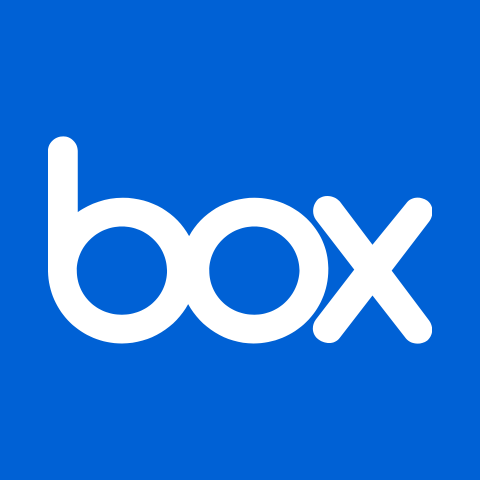
Box Relay
Best for Document-Centric Workflows and Automation
- Integration CapabilitiesSalesforce, NetSuite, Slack, API
- Automation ComplexityMedium
- Reporting and AnalyticsScheduling Reports, Platform Activity Report
About Box Relay
Box Relay is a workflow automation service offered by Box, a company headquartered in the US. Several for-profit and non-profit organizations use the service, including the US Forest Service and Broadcom. Box Relay integrates well with other Box services (e.g. e-signatures), making it the best software for document-centric workflows and automation.
Box Relay is available in Enterprise Plus plans. Users can automatically assign tasks, send notifications, and set up file and folder actions. Teams can also export audit histories to get a full overview of each workflow.
Users with Box Enterprise Plans get access to unlimited runs and can create their own workflow templates.
Box Relay Pricing
Box Relay is available with custom pricing on an Enterprise Plus plan, and you get access to all features with this subscription.
Box Relay Pros/Cons
Unlimited runs
Already-built DocuSign and Office 365 integrations
Unlimited external collaborators as part of the Box Enterprise Plus plan
While you can customize workflows, you can’t change the layout too much
Box (and Box Relay) is difficult to use in a web browser
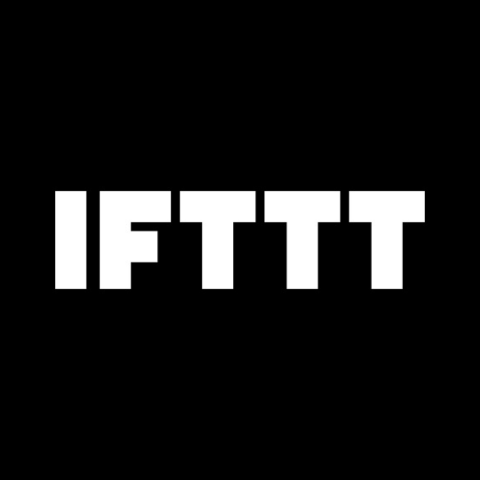
IFTTT
Best for Social Media
- Integration CapabilitiesSlack, Trello, Calendly, Notion
- Automation ComplexityLow
- Reporting and AnalyticsDaily and Weekly Summary Reports
About IFTTT
IFTTT was founded in 2010 and is headquartered in San Francisco, California. Over 27 million people use the app, including more than 900 brands; examples include Google, Calendly, Slack, and Instagram. With automation tools like tailoring Instagram posts for LinkedIn, IFTTT is the best workflow automation solution for social media.
Teams can use Applets to automate social media posting and repurpose content already published on other platforms. For example, IFTTT has a LinkedIn article generator and the option to draft tweets when going live on Twitch.
IFTTT also allows users to post Instagram photos to their Facebook page. Free plan members get two Applets and unlimited Applet runs, along with the option to create their own Applets. Paid plan members can access exclusive triggers and actions.
IFTTT Pros/Cons
Social media post and repurposing automation
Unlimited Applet runs, even on the free plan
Priority customer support is only available with a paid plan
Navigating the website on a desktop device is difficult
IFTTT Pricing
| Subscription | Monthly Price/User | Offerings |
|---|---|---|
| Free | $0 | 2 Applets, unlimited Applet runs |
| Pro | $2.92 | 20 Applets, multi-action Applets, customer support, triggers, and actions |
| Pro+ | $12.50 | AI services, priority customer support, connect multiple accounts |

Power Apps
Best to Modernize Legacy Apps
- Integration CapabilitiesOffice 365, Power BI, Google Drive
- Automation ComplexityHigh
- Reporting and AnalyticsCustom Reports, Data Visualization
About Power Apps
Power Apps is a Microsoft product that launched in 2016 after initial testing the year before. Over 20 million people, including 7.5 million+ developers, use the platform worldwide. With AI-building suggestions, development simplification through templates, and custom code development for expanding app capabilities, Power Apps is the best workflow automation software for modernizing legacy apps.
Teams using Power Apps can also utilize low-code technology to implement changes via Microsoft PowerFx, and it’s possible to create tailored app experiences using Power Apps. The tool also integrates with Copilot, and users can use this software to automate their processes and write code.
Power Apps offers approval workflows, AI suggestions, data migration, and the option to start for free or with templates. Teams can connect the app with programs like Amazon S3 and Airmeet.
Power Apps Pros/Cons
Ask Copilot to automate workflows based on specific needs
Works well within the Microsoft ecosystem (e.g. Excel)
Very few project management features for the full organization
While low-code features are available, you need technical knowledge to get the most out of Power Apps
Power Apps Pricing
| Subscription | Monthly Price/User | Offerings |
|---|---|---|
| Developer Plan | Free | Unlimited pre-launch app testing |
| Power Apps Premium | $20 | Full access to Power Apps |

n8n
Best for Technical Teams
- Integration CapabilitiesGitHub, Slack, Teams
- Automation ComplexityHigh
- Reporting and AnalyticsExecution Logs, Error Tracking
About n8n
n8n was founded in 2019 and is headquartered in Berlin, Germany. The app offers workflow pausing, debug features and both coding and no-code API connection. These features help n8n offer the best automated workflow solutions for technical teams.
Teams using n8n can copy and paste their imports and exports, meaning they can use them whenever they want. Users also have access to more than 800 workflow templates, including workflow user authentication, the ability to retrieve website data via GPTs, and new lead qualification. n8n also lets teams make advanced chatbots and personalized assistants.
To ensure that workflows are exactly as they should be, n8n allows users to drag and drop different AI tools via integration with LangChain. Moreover, n8n lets teams fork and adjust its source code to customize their processes exactly how they need.
n8n integrates with Slack, Freshdesk, Wise, Zoom, Google Keep, and several other apps. As of May 2024, the app is only available in English.
n8n Pros/Cons
Significant customization, such as a drag-and-drop LangChain integration
Unlimited users on all plans
Custom infrastructure hosting; choose from Amazon Web Services, DigitalOcean, etc.
Advanced technical knowledge is required to use the app
Only available in English
n8n Pricing
| Subscription | Monthly Price | Offerings |
|---|---|---|
| Starter | £20 | 2,500 workflow executions, five active workflows, unlimited users |
| Pro | £50 | 10,000-50,000 workflow executions, 15-50 active workflows, admin role customization |
| Enterprise | Custom | Unlimited workflow executions, up to unlimited active workflows, dedicated SLA support |
What Is Workflow Automation Software?
Workflow automation software is any solution that helps teams and project managers automate their processes. These tools use prompts and conditions to move tasks along without the user needing to do anything apart from the initial groundwork.
One example of workflow automation software would be a social media manager, automatically moving a card to “complete” once each week’s Instagram posts have been scheduled or published.
Workflow automation software also works for several project management scenarios. For example, if a team is developing an app, they can automatically move tasks along when one user has completed what they need to.
Why Does Workflow Automation Software Exist?
Workflow automation software is designed to save teams time on all projects, but it’s especially useful for repetitive and time-consuming tasks. For example, sales teams often need to search for leads and reach out to the prospect. Workflow automation software solutions can notify someone when they need to make a call or send an email.
Who Uses Workflow Automation Software?
Knowledge workers are the main users of workflow automation software, especially in teams with several weekly tasks (e.g. sales, programming, and marketing). Self-employed people also regularly use workflow automation software to minimize how long they need to spend on admin work like submitting invoices for retainer clients.
Does Workflow Automation Software include Cloud Storage?
Workflow automation software often includes cloud storage, and they often work in tandem with apps like OneDrive and Google Drive. Some workflow automation tools, like Box Relay, are also part of cloud storage software (Dropbox).
What are the Advantages of Workflow Automation Software
The main benefits of workflow automation software are given below.
- Improve productivity by freeing up teams’ brain capacity to focus on essential tasks (e.g. building apps). Users don’t need to spend hours each week moving along cards, and they can often assign tasks to key members based on “if > then” conditions.
- Teams can identify bottlenecks, such as project delays, and act accordingly to stop these from derailing the whole project.
What are the Disadvantages of Workflow Automation Software?
Below are the disadvantages of workflow automation software.
- Some workflow automation software is difficult to use and requires coding experience.
- The technology only works as well as its users; if teams don’t know how to set up effective automation prompts and conditions, they can spend longer than they would have chasing projects.
- Workflow automation software occasionally lacks additional project management features, making it necessary to use two separate apps.
How Much Does Workflow Automation Software Cost?
Workflow automation software normally costs between $7.99/mo and $150/mo. However, custom plans can sometimes cost more. Pricing is often per user.
Is Workflow Automation Software Worth It?
Workflow automation software is worth it for teams with lots of tasks to complete, but who feel like they’re spending too much time on admin work. For example, programming teams who need to develop a new app will complete their projects much quicker if they aren’t manually assigning tasks at each stage.
What is the Difference Between Workflow Automation Software and Project Management Software?
Workflow automation software is specifically designed to take the manual tasks out of processes and move each project along on a more granular level. On the other hand, project management software is used for planning projects, viewing capacity, and allocating assignments.
Project management software and workflow automation software often work in tandem with each other, and numerous project management tools offer automation via native features or integrations. For example, while a marketing team might use project management software to plan their campaign and allocate resources, they can use workflow automation software to create new assignments when one stage of the project has been completed.

